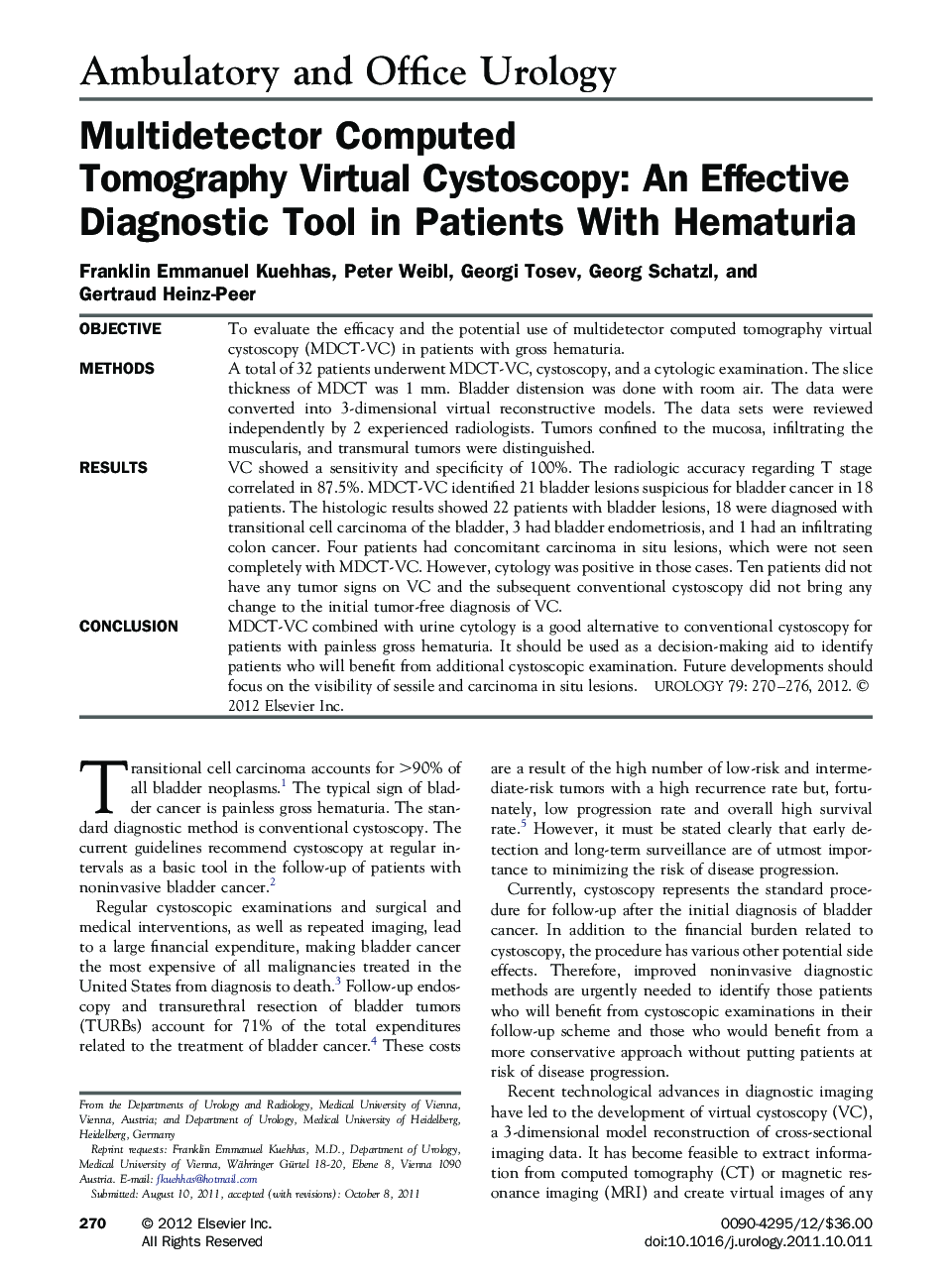| Article ID | Journal | Published Year | Pages | File Type |
|---|---|---|---|---|
| 3900455 | Urology | 2012 | 7 Pages |
ObjectiveTo evaluate the efficacy and the potential use of multidetector computed tomography virtual cystoscopy (MDCT-VC) in patients with gross hematuria.MethodsA total of 32 patients underwent MDCT-VC, cystoscopy, and a cytologic examination. The slice thickness of MDCT was 1 mm. Bladder distension was done with room air. The data were converted into 3-dimensional virtual reconstructive models. The data sets were reviewed independently by 2 experienced radiologists. Tumors confined to the mucosa, infiltrating the muscularis, and transmural tumors were distinguished.ResultsVC showed a sensitivity and specificity of 100%. The radiologic accuracy regarding T stage correlated in 87.5%. MDCT-VC identified 21 bladder lesions suspicious for bladder cancer in 18 patients. The histologic results showed 22 patients with bladder lesions, 18 were diagnosed with transitional cell carcinoma of the bladder, 3 had bladder endometriosis, and 1 had an infiltrating colon cancer. Four patients had concomitant carcinoma in situ lesions, which were not seen completely with MDCT-VC. However, cytology was positive in those cases. Ten patients did not have any tumor signs on VC and the subsequent conventional cystoscopy did not bring any change to the initial tumor-free diagnosis of VC.ConclusionMDCT-VC combined with urine cytology is a good alternative to conventional cystoscopy for patients with painless gross hematuria. It should be used as a decision-making aid to identify patients who will benefit from additional cystoscopic examination. Future developments should focus on the visibility of sessile and carcinoma in situ lesions.
